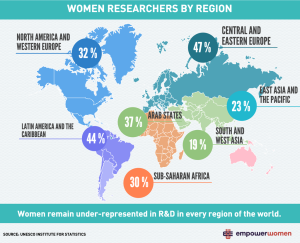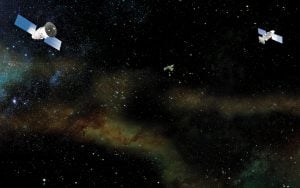
Science & Tech
UN declares International Day of Women in Science
From Roberta Bondar to Harriet Brooks, Canada has more than its fair share of women scientists to be proud of. However women are still a minority in the STEM fields
- 472 words
- 2 minutes
This article is over 5 years old and may contain outdated information.
Science & Tech

With colour schemes such as “Flowering Plum,” “Sea Foam” and “Condominium Glass,” you’d be forgiven for thinking that the latest creation from the mind of Douglas Coupland, renowned author of Microserfs and Generation X, is a whimsical piece of public art designed to improve the urban aesthetic. But, Coupland being Coupland, there’s more to it than that — enough, in fact, to not only improve the way cities look but also revolutionize the way they function.
It’s called the V-Pole, an all-in-one utility pole designed to be an attractive, energy- and cost-efficient alternative to what Coupland calls the “spaghetti and guts” of the utility poles, cellphone towers and parking meters that clutter our cities. Alhough it’s still in a conceptual stage, the V-Pole would provide Wi-Fi and mobile wireless coverage, electric-vehicle charging, parking transactions and LED street lighting.
Coupland came up with the idea a year ago while talking with his friend Gregor Robertson, Vancouver’s mayor, about the number of poles in the city. But when Coupland started looking into ways to create multi-purpose poles, he ran into trouble. “It was quite a disaster,” he says. “Telephone companies all hate each other — I couldn’t see them sharing information with one another on a pole.” Things started looking up when Coupland discovered the lightRadio, a fist-sized, open-source wireless device developed by Bell Labs (the R & D subsidiary of telecom titan Alcatel-Lucent) that would allow several carriers to share space — but not information — in a V-Pole.
The V-Pole’s all-in-one appeal, however, may also be a stumbling block: sharing one pole between multiple cellphone networks, car companies and the city could raise some tricky questions about the source of the required funding. In June, Vancouver City Council voted to explore the viability of the V-Pole, a move that councillor George Affleck opposed. He thinks the V-Pole is an excellent concept but believes the services it would provide should be left in the hands of the private sector. “We’re already unsuccessfully in the utility business, and we shouldn’t be,” Affleck says. “It’s costing us millions, and we already have systems in place for these things.”
But Coupland isn’t concerned. He claims that there has already been considerable business interest in the venture. “It’s just a really smart, inevitable, desirable thing. It’s kind of like the ’67 Ford Mustang — everyone wants it.”
For more information on the V-Pole, visit www.v-pole.com.
Are you passionate about Canadian geography?
You can support Canadian Geographic in 3 ways:

Science & Tech
From Roberta Bondar to Harriet Brooks, Canada has more than its fair share of women scientists to be proud of. However women are still a minority in the STEM fields

Science & Tech
As geotracking technology on our smartphones becomes ever more sophisticated, we’re just beginning to grasps its capabilities (and possible pitfalls)

Environment
Carbon capture is big business, but its challenges fly in the face of the need to lower emissions. Can we square the circle on this technological Wild West?

Science & Tech
Environmental entrepreneur Miranda Wang turns to science to seek profitable solutions to the problem of what to do with our mountains of plastic waste